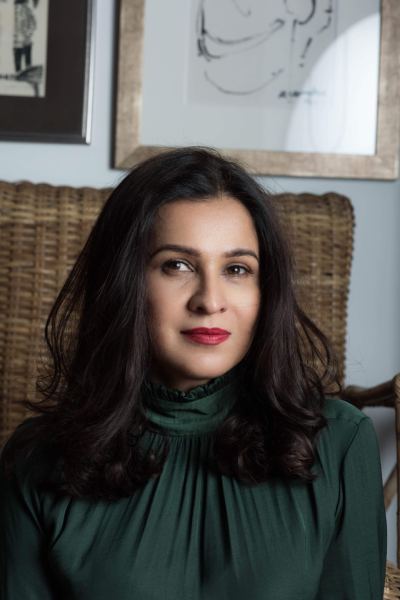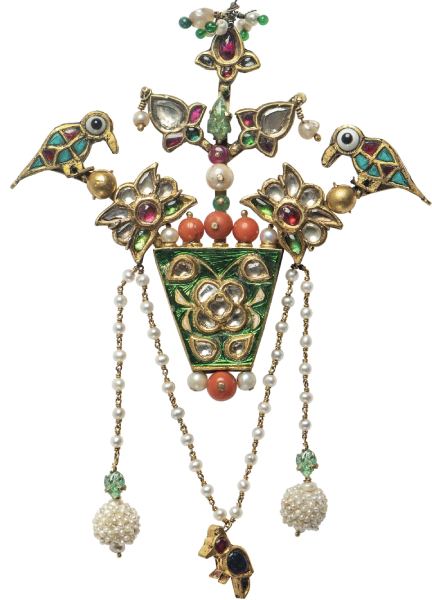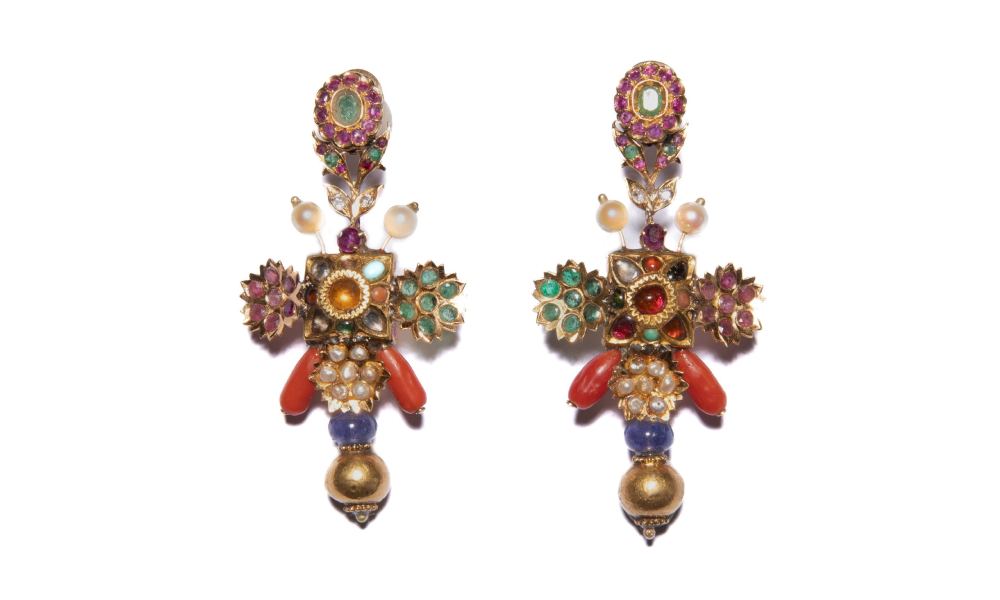Hyderabad-based jewellery designer Swapna Mehta is famous for upcycling her jewellery creations with a dual purpose – showcasing her dedication to both the preservation of India’s rich art and culture, while perpetuating the remarkable craftsmanship of artisans. With a discerning eye as an art collector and historian, Mehta adeptly resurrects salvaged motifs and ingeniously repurposes them into awe-inspiring jewellery pieces that effortlessly harmonise with contemporary aesthetics. In an exclusive interview with Solitaire International, Mehta sheds light on her extraordinary artistic process.
Tell us more about yourself. Are you a historian or an art collector?
As an up-cycle jewellery artist my work tends to involve many roles, including that of a historian and an art collector. I would say that my role expands to that of a designer, because my jewellery-making process involves collection, research at every stage, design, and creation. In constructing a singular piece, I find it important to research the history behind objects and pieces, how they were worn, by who, what the influences were and the region they originate from.

What fascinated you to begin repurposing jewellery? In a day and age when sustainability is the buzz word, you began the journey much earlier by scouring jewellery pieces from various sources across the country and putting them together. What were the main drivers to get into this hitherto untapped niche segment?
With my admiration for the craftsmanship in vintage and antique finds, I would seek these while jewellery shopping for myself. As I collected these, I began to build mosaics of these bits and pieces that often did not come in their whole form. These pieces were often abandoned or melted for their gold even though they possessed incredible craftsmanship and cultural memories. As I put them together, I found them to be one-of-a-kind that were enjoyable to wear in my everyday life, which made them more accessible.
Even though I love the old craftsmanship and the way jewellery was crafted back in the day, I realised that all the jewellery I saw was either mass produced, trend-based jewellery or pieces that just did not feel original due to their lack of character. Jewellery seemed to be poor reproductions of the old-period, elaborate jewellery, which worked only as wedding or occasion wear. These were not something that seemed heirloom-worthy due to the industrial, mass-produced quality or the lack of imagination and work that went into creating them.
With my jewellery, I wanted to change the values of the culture surrounding jewellery; I wanted them to transcend their importance as just a statement of wealth and be a statement of style and remembrance for the way in which they are produced with a more slow-paced model.

Did this impel you to take courses in jewellery making?
As someone whose jewellery is strongly based on the work of others, through both craftmanship and in influence, I believe that the industry should be open to learning from each other (while giving credit where it is due), and not being afraid to innovate through encouraging creativity and imagination that transgresses imposed boundaries that exist in the industry.
With a change in jewellery culture in India due to globalisation and industrialisation, craftsmen and artisans who possess age-old knowledge are at threat from their livelihoods being replaced by mass-production.
I find my jewellery to be a fruit of collaboration through working with a variety of karigars and jewellery workers from across the country. My process not only works to preserve the knowledge on jewellery they possess, but also attempts to introduce this into the everyday.

Tell us more about the challenges that you face when putting pieces from different regions together, especially since the aesthetics are so varied from one state to another?
I do not find this to be a challenge, instead I find this to be a rewarding and exciting process. Working with different mediums and genres of jewellery and stitching them together until the piece harmonises feels like a puzzle to me. While finding pieces can be a challenge, I enjoy honouring them in a way that remembers the craftsmanship they hold.
Could you walk us through a typical transformation from an old piece to a new design? While piecing together a jewel, do you also use more precious metal or gems, etc to complete it?
While it differs from piece to piece since it’s not a standard process, for most of the pieces, there is a goldsmith involved for putting them together. The people involved for each of the pieces also depend on the various craftmanship I am looking to highlight. For example, for my Basra collection, the jewellery I designed depends on the workmanship of Mala Paroi karigars (literally translates to pearl-binding artisan) who stitch the pearls together in an extensive process.
Unfortunately, workmanship processes around jewellery and jewellery around jewellery remain largely undocumented, invisible or forgotten in the mainstream with industrial production replacing them.
I tend to use lots of Basra, old mine gems, while refraining as much as possible from using new mined gems with questionable sources. While there are ethical concerns with the sourcing of gems, I believe that using older gems gives them an opportunity to live a new life with a different identity in one of my pieces.
The process is never the same for each transformation, and it involves what pieces I am working to highlight or what new-old finds I want to include.

Do clients come with their old jewellery to remodel their heirlooms?
I do not encourage this at all.
What inspires you the most?
My own influences stem from Alexander Calder, Art Smith, Claude Lalane, and multiple anonymous jewellery artisans across India and across time who remain unnamed and uncredited due to the lack of documentation around their work.
Aside from jewellery, my keen interests lie in textile and architecture, and this became a huge source of my inspiration for design.
This can be identified in my use of Tree of Life from Kalamkari, old, lace-like weaves and Mughal motifs like urns and vases as a few examples. Buildings from the Mughal era, especially with the Persian style marble inlay work, Central Asian/Persian gardens and various works from the Ottoman era are the architectural sources that I looked to for the form in my pieces.
What is the USP of your brand?
No two pieces are ever the same; each piece is unique.
Are customers interested in the provenance of the piece when buying it?
Yes, customers are intrigued and love to ask questions about the history of the piece. We enjoy when they do so because we feel the history is remembered and preserved.
How has the journey been so far?
It’s been 8 years and I haven’t looked back since I started. I am overwhelmed by the love and acceptance of people. I was quite shocked, and rather grateful that people enjoyed the concept of my jewellery since it was a stark contrast to what was being done at the time.
I am fortunate to have been invited by Christie’s in Bombay to showcase my work and discuss the process of making my jewellery. Additionally, I was honoured to be invited by the Francesca Galloway gallery in London, known for its Indian and Islamic art collections.
Tell us about your retail model. When did you establish your brand and where is your boutique?
Our brand was established in 2016 via Bungalow 8 in Bombay. While we are based in Hyderabad, we do not have a boutique.

